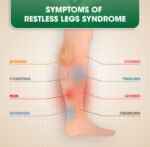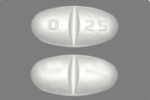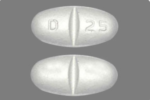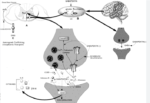Gabapentin, also known by the brand name Neurontin, is a prescription painkiller belonging to its own drug class, Gabapentinoids. It is considered an anti-convulsant, and is most commonly used to treat epilepsy, restless leg syndrome, hot flashes, and neuropathic pain. It is often used as a less-addictive alternative to opioids; however, Gabapentin addiction and abuse still occur in many patients.
Gabapentin has a similar chemical structure to Gamma-aminobutyric acid (GABA), the brain chemical which affects the body’s nervous system. It can produce feelings of relaxation and calmness, which can help with nerve pain, anxiety, and even poor sleep.
Gabapentin is prescribed to treat nerve pain, alcohol and cocaine withdrawals, restless leg syndrome, diabetic neuropathy, fibromyalgia, and seizures. It works by altering one’s calcium channels to reduce seizures and ease nerve pain. Some brand names of Gabapentin are Neurontin and Gralise. The drug’s known street names are “gabbies” or “johnnies.”
In addition its potentially addictive nature, Gabapentin can cause suicidal thoughts, moods swings, and abrupt changes in a user’s behavior. It can also cause elevated blood pressure, fever, sleep problems, appetite changes, and chest pain.
gabapentin is not classified as a narcotic (opioid). It is an anticonvulsant and nerve pain medication that is primarily used to treat seizures and neuropathic pain (pain caused by nerve damage), such as that from shingles or diabetic neuropathy. It is also sometimes prescribed off-label for conditions like anxiety and restless leg syndrome.
While gabapentin is not a narcotic and does not work on the same receptors as opioids, it can still affect the nervous system. It works by altering the way nerves send signals to the brain, helping to calm nerve activity and reduce pain or seizure risk.
Potential for Misuse
Although gabapentin is not a controlled substance at the federal level in the United States, there have been concerns about its misuse or abuse, especially when taken in higher doses or with other substances like opioids. Some states have reclassified gabapentin as a controlled substance due to its potential for misuse.
Key Differences Between Gabapentin and Narcotics:
- Mechanism of Action: Gabapentin affects nerve signaling, whereas narcotics (opioids) act primarily on opioid receptors in the brain to relieve pain.
- Addiction Risk: Narcotics have a high potential for addiction and physical dependence, while gabapentin has a lower potential for abuse, though it still exists in some cases.
- Controlled Substance Status: Narcotics are typically classified as controlled substances, while gabapentin is not federally controlled, though some states have enacted restrictions.
If you’re prescribed gabapentin, it’s important to use it only as directed by your doctor and discuss any concerns about side effects or misuse.
![]()
The word narcotic is derived from a Greek term “narkō” which translates to “make numb.” Many people use the term narcotic in a broad sense to describe any psychoactive substance, particularly those that are capable of inducing sleep (i.e. hypnotics).
In the United States, most individuals think of opioids and opioid-deriviatives when they hear “narcotics.”

Opioids like heroin, morphine, and synthetic formulations like hydrocodone are regarded as narcotics. Most addictive drugs associated with significant psychological and/or physical dependence and/or “controlled-substances” may be considered narcotics. Due to the fact that Gabapentin is not associated with addiction nor dependence, it is not commonly referenced as a “narcotic.”
While some would argue that the drug is addictive and dependence (especially psychological), most literature suggests otherwise; hence its non-inclusion in the list of “controlled-substances.” That said, some have suggested that the closely-related drug Pregabalin (Lyrica) is a controlled-substance and therefore Gabapentin should also be.
Legally, Gabapentin is not considered a narcotic. It is not a controlled substance, has a low potential for abuse, and is not medically associated with dependence.
While the drug is capable of acting similarly to benzodiazepines (e.g. Valium) in that it affects neurotransmission of GABA, its effect is different and it is considerably less potent.
The intoxicating potential of Gabapentin pales in comparison to federally classified narcotics like heroin. Most recreational drug users aren’t seeking out Gabapentin over the legitimate narcotics like morphine, hydrocodone, oxycodone, etc. At higher doses, the bioavailability of Gabapentin decreases, making it tougher to abuse and ultimately safer than federally classified narcotics.
Pain Medications, Pain Relief, and Pain Management







bmvaud